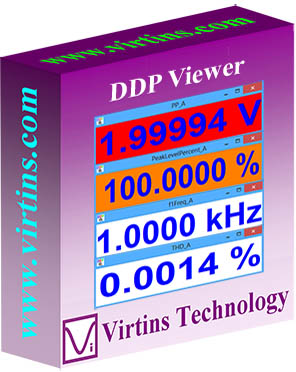
Specifications
- Display the value of a Derived Data Point (DDP) or User Defined Data Point (UDDP) in a standalone window. Maximum 32 windows can be opened.
- Allow High-High, High, Low, Low-Low alarming. Alarm sounds can be configured. Alarm acknowledgement is supported.
- Displayed precision can be specified.
- Allow the user to define a UDDP using mathematical expression. Various math functions are supported.
- Support inter-frame processing including linear and exponential averaging.
-
Support DDP Array Viewer which can be used to generate the following reports:
- Harmonic Frequencies, RMS, Phase
- Octave Bands, RMS
- Peak Frequencies, RMS, Phases
- Frequency Bands, RMS
- Reverberation / Speech Intelligibility (1/1 Octave)
- Reverberation / Speech Intelligibility (1/3 Octave)
- Supports Multilingual User Interface under Windows 2000, XP, Vista, 7, 8, 8.1, 10, 11 and above. Currently supported languages are English, French, German, Italian, Portuguese, Spanish, Russian, Simplified Chinese, Traditional Chinese, Japanese and Korean.
Examples
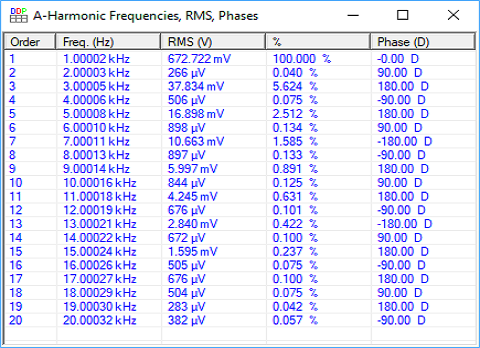
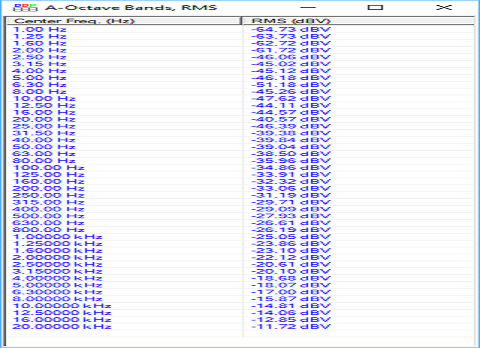
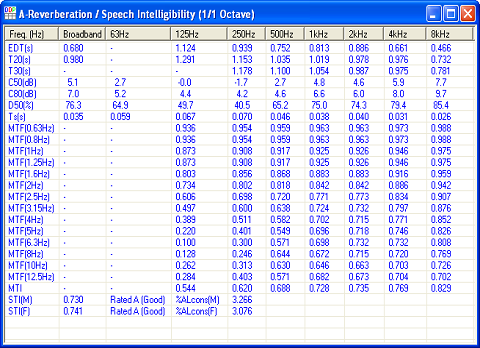
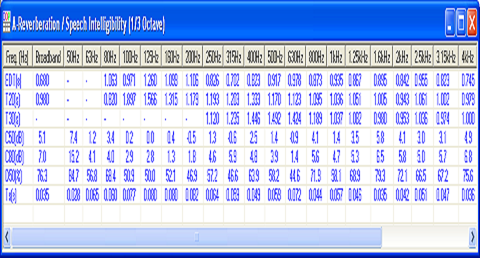
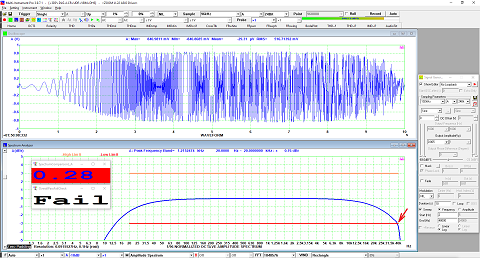
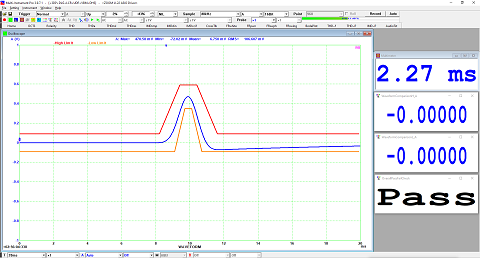
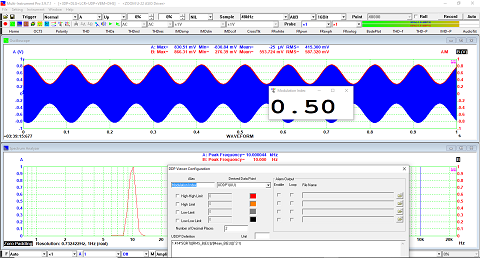
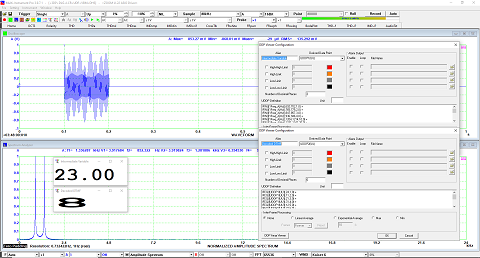
×
![]()